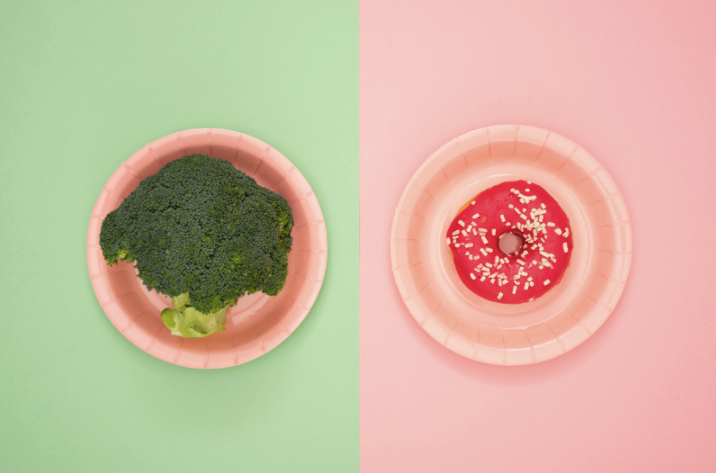
7 Surprising Food Hacks That Will Help You Cut Back on Ultra-Processed Foods
Do you wish you had some super easy food hacks to drastically cut back on how much ultra-processed food you eat?
I have seven for you. There are many more, but I had to stop writing.
We hear a lot about the “dangers” of ultra-processed foods (also called “highly-processed”) and how we should eat fewer of them. Yet, how do we do that? Do we even know what a ultra-processed food is?
In this post, we’ll break down:
- What the heck is ultra-processed food (UPF)?
- Seven easy food swaps that will cut way back on how much ultra-processed food you eat, plus you’ll learn ways to:
- Eat more vegetables (and like it)
- Reduce simple sugars and carbohydrates
- Have a sweet treat without a lot of added sugar or other sweeteners
By the end of this post, you’ll know exactly how to identify cut back on ultra-processed foods.
What is Ultra- (or “Highly“) Processed Food?
Ultra-processed foods (UPF) are what I like to think of as “the next level”, compared to regular packaged single foods, like tuna, peas, or freshly-baked bread. In other words, UPFs go beyond the incorporation of salt, sweeteners, or fat to include artificial colors and flavors and preservatives that promote shelf stability, preserve texture, and increase palatability.
For reference, here are the four levels of food processing:
1. Unprocessed or Minimally Processed.
These are the natural edible food parts of plants and animals.
- Examples: fresh fruits, vegetables, whole grains, nuts, meats, and milk.
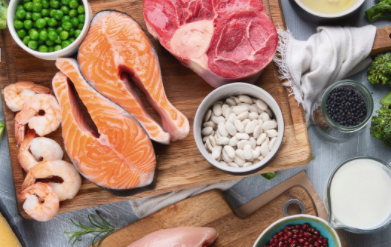
2. Processed Culinary Ingredients
As the name suggests, these are minimally processed foods that are typically used in recipes and have been pressed, milled, ground, or refined.
- Examples: oils from plants, seeds, and nuts; whole-grain flour and pastas.
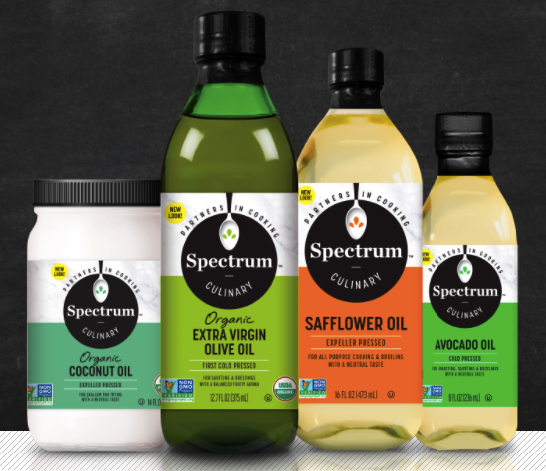
3. Processed Foods
Processed foods are those from the first two groups that have added salt, sugar, or fats. They contain very few, familiar ingredients and can be eaten without further preparation.
- Examples: most canned fruits, vegetables, and fish; freshly-baked bread.
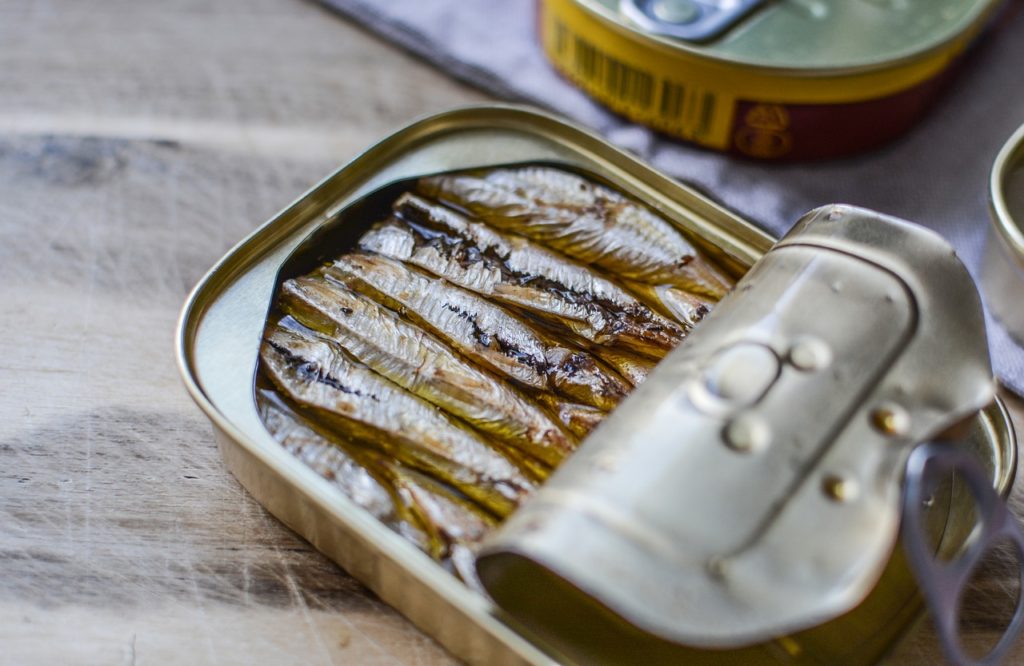
4. Ultra-Processed Foods
UPFs go beyond the incorporation of salt, sweeteners, or fat. They also have added artificial colors and flavors and preservatives that promote shelf stability, preserve texture, and increase palatability.
- UPF are usually ready-to-eat and require little or no preparation. For example, cookies, crackers, frozen dinners, sodas, and salad dressings are all considered UPFs.
- However, there are a lot of nutritious foods that are considered “ultra-processed,” like the examples below:
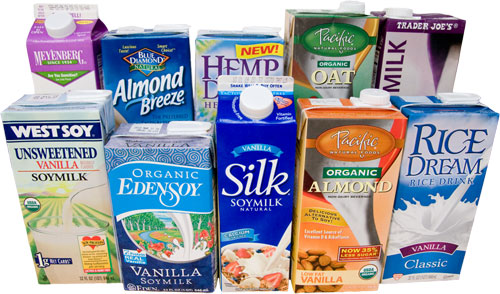
Plant milks have added thickeners, vitamins, and minerals 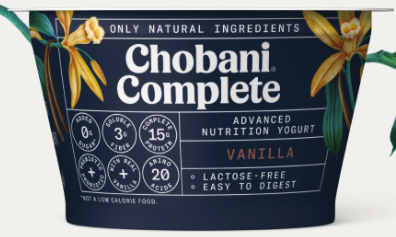
Most yogurt contains gelling agents, sweeteners, and more 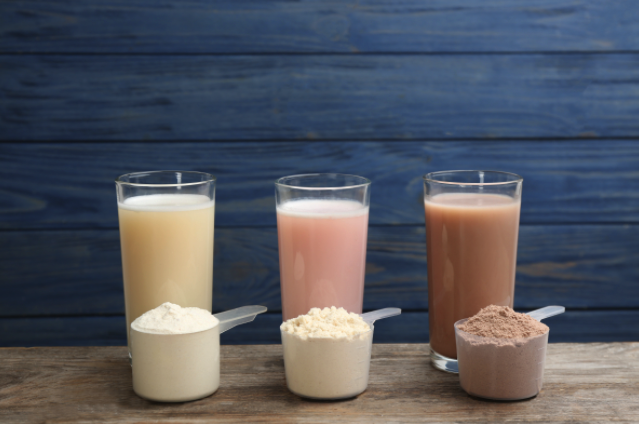
Protein powders have anti-caking agents, sweeteners, etc.
The general thinking is that more processing = lower nutrition, but that’s not the whole story. It’s true that some ultra-processed foods have lower levels of vitamins, minerals, fiber, etc. than their less processed counterparts.
But wait – there’s more! Ultra-processed foods also (and maybe more importantly) tend to be more calorically dense (more calories per bite), and really, really tasty. Long-story-short: they “go down” easy, so we tend to eat more UPFs before we feel full. Interestingly, there is some research to back this up: several studies have suggested that eating more ultra-processed food is tied to overweight and obesity.
In addition, a recent study estimated that the majority of calories eaten in the US are from ultra-processed foods (58%) and 90% of all added sugars we eat are from UPFs.
Ultra-Processed Foods are not Evil!
Let’s not grab or torches and pitchforks just yet.
First, UPFs are NOT poison or evil killers. Why? Because humans need food. Even when unprocessed food isn’t an option, we still need to eat.
Second, a lot of UPFs are pretty nutritious (yogurt, plant-based milks, infant formula, energy bars, and more).
Third, UPFs add to our quality of life. By that, I mean that we can bring food with us wherever we go, knowing that it won’t spoil (which would really make us sick). Shelf-stable food gives people nutrition when we don’t have access to fresh foods.
So, in general, diets high in UPFs tend to be lower in nutrition, and higher in calories and sugar. While UPFs do have their place in modern nutrition, it’s nice to know a few tips and tricks for reducing UPFs in our diets.
Hack #1: Microwave Vegetables Before Roasting
The Swap: More Vegetable Side Dishes / Less Macaroni & Cheese, Frozen French Fries, etc.
- Roasted vegetables will be just as easy and quick as alternatives (because of the microwave shortcut!)
- Caramelized vegetables are way more delicious than steamed or raw.
How To Do It:
- Microwave chopped raw or frozen vegetables for 3 – 4 minutes, or until they are basically cooked through and tender.
- Then, toss them with a drizzle of oil or melted fat, some salt and pepper and roast on a cookie sheet at 425’F for 20 minutes.
- They will turn delightfully browned (caramelized) and delicious.
Nutrition Boost:
- More vitamins and minerals eaten
- More fiber in your diet -> a healthier digestive system/gut
- You’ll get more complex carbs (from whole vegetables), fewer simple carbs and sugars (from refined pasta and potatoes)
Hack #2: Easy Homemade Ranch Dip
The Swap: (Hopefully) More Vegetables / Less Ultra-Processed Ranch Dressing
- Ranch dip practically begs for baby carrots and celery. Plus, these vegetables are already in stick form and very affordable.
- Store-bought Ranch Dip and Dressing definitely has its place and is awesome in a pinch, but it does have all sorts of weird ingredients – that’s how it stays so thick and delicious while sitting on a shelf for months!
- Try making your own ranch – it takes five minutes, is less expensive, and healthier than store-bought.
How To Do It:
Mix the following dry seasonings together:
- tsp dried dill
- 1 – 2 tsp garlic powder (we like 2)
- tsp onion powder or dried onion flakes
- 1/2 tsp dried basil
- salt and pepper to taste
For Dressing: In a sealable jar or bottle (at least 14-oz), combine the dry seasonings plus 1/2 cup mayo, 1/2 sour cream, and 1/2 cup milk. Shake like heck.
For Dip: Stir the seasoning mix with 1 cup of sour cream and let sit in the fridge for at least 30 minutes (if you can wait that long).
For Vegan & Paleo Dip: In a sealable jar (or blender is even easier), mix seasonings with 1/2 cup paleo mayo and 1/2 cup full fat coconut milk. Thanks to my super healthy friend Adrienne for sharing this modification!!
Don’t like Ranch? Try one of these four easy homemade non-Ranch dips.
Nutrition Boosts:
- You’ll be eating more nutritious, less processed Ranch dressing (thanks to real sour cream, mayo, and coconut milk) AND more vegetables.
Compared To: Store-bought Ranch dressings and dips
Hack #3: Use Vegetables as Chips or Crackers
The Swap: More Vegetables / Fewer Potato or Corn Chip-Type-Foods
… because you’re eating vegetables as chips. We are not talking about Veggie Straws here, either! (Spoiler alert: Veggie Straws and their brethren are basically potato chips with a splash of veggie juice for color.)
How To Do It:
- Slice cucumbers into chip-shaped rounds, cut bell peppers into scoop-shaped strips, or (easiest!!) buy some baby carrots or snap peas.
- Use them like chips to carry your favorite dip, cheese, or whatever you like on chips and crackers.
Nutrition Boosts:
- More vitamins and minerals eaten – from vegetables
- More fiber in your diet -> a healthier gut
- You’ll be consuming less sugar and simple carbs!
Compared To: Potato chips, corn chips, crackers, pita chips
Hack #4: Replace White Rice and Pasta With …
The Swap: Quinoa, Beans, or Whole Grains Instead of White Rice and Pasta
Simple sugars and carbohydrates are not always the healthiest choices; however, whole-grain, legumes, and some seeds (quinoa) are excellent sources of complex carbohydrates and other nutrients.
Compared to white rice and refined pasta (anything not labeled whole-grain); quinoa, beans, and whole-grains have plenty of fiber, protein, and vitamins and minerals. The reason for the nutritional difference is that when processing grains for white rice and pasta, a lot of the grain (the part with the protein, fiber, and vits/mins) is removed.
How To Do It:
Many ways! Here are a few of my favorite (and easiest):
- Buy brown rice instead of white; whole-grain pasta instead of regular/refined.
- Substitute quinoa for rice in your favorite dishes..
- Easiest Ever: Try substituting canned black beans for rice, or white beans for pasta in some recipes. No cooking or boiling water involved!!
Nutrition Boosts: Fewer simple carbs, more protein, fiber, vitamins and minerals
Compared To: White rice, regular pasta
Hack #5: Add Cinnamon
The Swap: Cinnamon Instead of Sugar
Have you noticed that adding cinnamon to foods makes them taste sweeter? In fact, cinnamon is considered a “sweet spice” because it is taken from the bark of a tree, which contains sap (which has sugar in it). However, the amount of actual sugar is super low – most of the calories in cinnamon come from fiber (woohoo!).
Not only does cinnamon taste amazing, it is chocked full of antioxidants (the compounds that get rid of free radicals in our bodies). In addition, studies have indicated that it may be helpful in managing everything from blood sugar to Alzheimer’s.
So, how about swapping some cinnamon in for sugar??
How To Do It:
Many ways! Here are a few that are my favorite and take only a few shakes (or seconds):
- Add a few dashes (or, if you’re me – closer to a teaspoon) to your oatmeal or cold cereal. Cut back on or don’t add any sugar at all.
- Mix cinnamon in to plain yogurt and you’ll find that you don’t need honey, maple syrup, other sweeteners.
- Sprinkle a little cinnamon on fresh fruit – sliced pears, apples, bananas, for example – for a sweet and healthy treat.
Nutrition Boosts: Less Sugar, More Antioxidants
Compared To: Sugar, honey, agave, maple syrup
Hack #6: Freezing Applesauce, Yogurt
The Swap: Applesauce + Yogurt Instead of Ice Cream
Ice cream is a wonderfully amazing treat to have … occasionally. Although I love ice cream, it’s not a good “every night” dessert for me. Instead, I’ve found that mixing and freezing applesauce and yogurt (with some additional mix-ins), tastes pretty great and makes my tummy happy right before bed.
You might be able to guess the nutritional differences between ice cream and applesauce yogurt, but here’s the comparison. What a difference!!
Vanilla ice cream (Breyer’s Natural Vanilla), per cup
Calories: 255
Saturated fat: 9 grams
Added sugars: 28 grams
Fiber: 0 grams
Protein: 4 grams
Unsweetened applesauce and Lowfat Greek Yogurt, per cup
Calories: 110
Saturated fat: 2 grams
Added sugars: 0 grams
Fiber: 4 grams
Protein: 13 grams
ADVANTAGE: Applesauce + Yogurt
How To Do It:
- An a bowl, mix about 1/2 cup applesauce and 1/2 cup plain yogurt. Add cinnamon, nut butter, or granola if you like.
- Put it in the freezer for 15 – 45 minutes, depending on how frozen you want it, and enjoy.
Want to “fancy it up”? Try making a Pumpkin Bowl and freezing it.
Nutrition Boost: More Protein, Way Less Sugar, Less Saturated Fat, More Fiber
Compared To: Ice cream, pudding, custard
Hack #7: Better Treats for Your Sweet Tooth
The Swap: Sweet Whole-Food Snacks Instead of Packaged Cookies
First, let’s be clear: a less-sugar, whole-foods cookie or bar will NOT taste the same as a bakery-fresh, full-on buttery, sugary cookie. Just so we’re clear – these are not the same thing.
What can be the same, though, is the amount of effort you put into satisfying your sweet tooth.
The big difference here is that you’ll be eating a treat that tastes, let’s say, 80% as good and has waaayy more nutrition for that awesome body that carries you around all day.
Compared to packaged or bakery treats, whole food sweet snacks (like the ones below) have: less sugar, more protein, more fiber, more vitamins and minerals (from nuts, fruits).
How To Do It:
- Go to your local supermarket and grab a few LARABAR or RXBars, or visit Natural Grocers and look for Chunks of Energy. (Thanks to my friend Becca for telling me about Chunks of Energy!)
- Experiment with flavors to find ones you like – my faves are LARABAR in Pumpkin Pie and RXBar in Chocolate Sea Salt.
- Make your own! Here’s a 30-minute, 6-ingredient recipe for Chocolate Nut Butter No-Bakes or this recipe for Black Bean Brownies (they’re good, I promise!).
Bonus: all of these food swaps are gluten-free! LARABARs, Chocolate Nut Butter No-Bakes, and Black Bean Brownies are also vegan.
One of the big takeaways here is how many ingredients are in most packaged cookies.
For example, here’s the ingredient list for a popular packaged cookie:
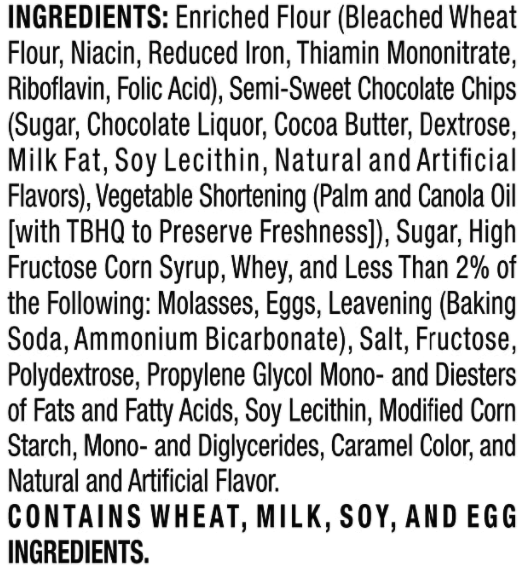
For comparison, here’s the ingredients in an RXBar:
Nutrition Boost: More Protein, Less Added Sugar, Less Saturated Fat, More Fiber

Compared To: Pre-packaged Cookies, Brownies, Pastries
Summary
Ultra-processed foods are often demonized in health media. In this article, we defined UPFs and weighed the pros and cons of them. Then, we gave seven simple and nutritious food hacks, or swaps, that you can start trying today. Each food hack substitutes more whole foods, which are lower in simple carbs and higher in nutrients, for less-nutritious UPF options.
To recap, here are the problems we solved:
- We defined levels of food processing, so that you now know what types of foods are considered “ultra-processed.”
- Hacks #1, #2, and #3 are three food swaps for increasing vegetables and decreasing simple starches and sugars.
- Swap #4 is a super simple and easy way to replace refined grains with whole grains, legumes, or seeds.
- Hacks #5, #6, and #7 are easy and delicious ways to satisfy a sweet tooth with less sugar.
- All 7 food swaps will add more whole foods and cut back on ultra-processed foods you eat.
Conclusion
Processed and ultra-processed foods are convenient, tasty, and have their place in modern human nutrition. However, studies have shown that eating too much ultra-processed foods is linked to poorer overall health. With a few simple food swaps, you can easily cut back on ultra-processed foods, eat more vegetables and whole foods, and decrease the amount of sugar you eat.
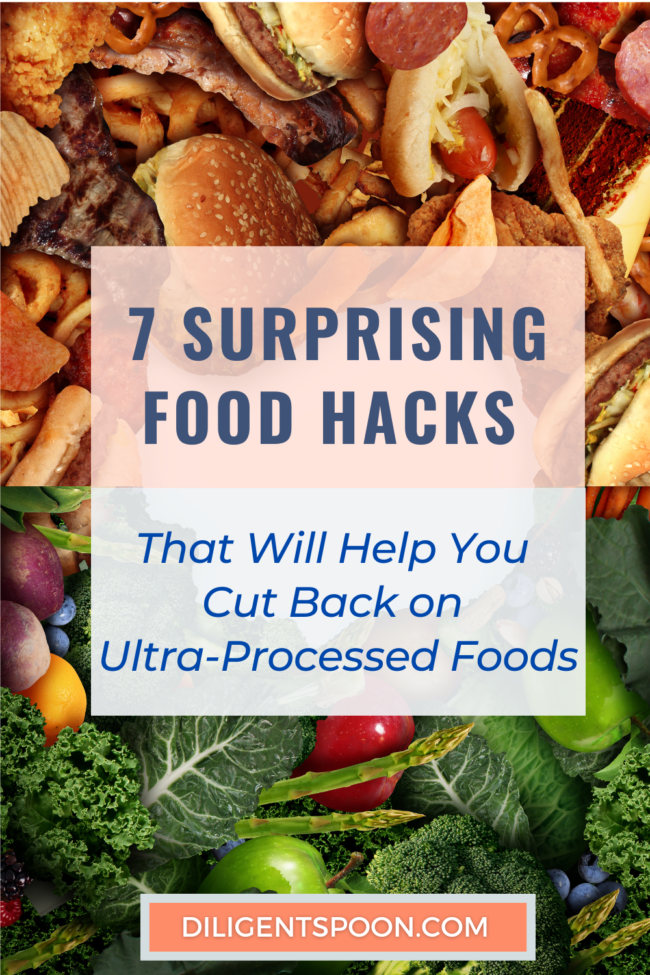
References
The UN Decade of Nutrition, the NOVA food classification and the trouble with ultra-processing


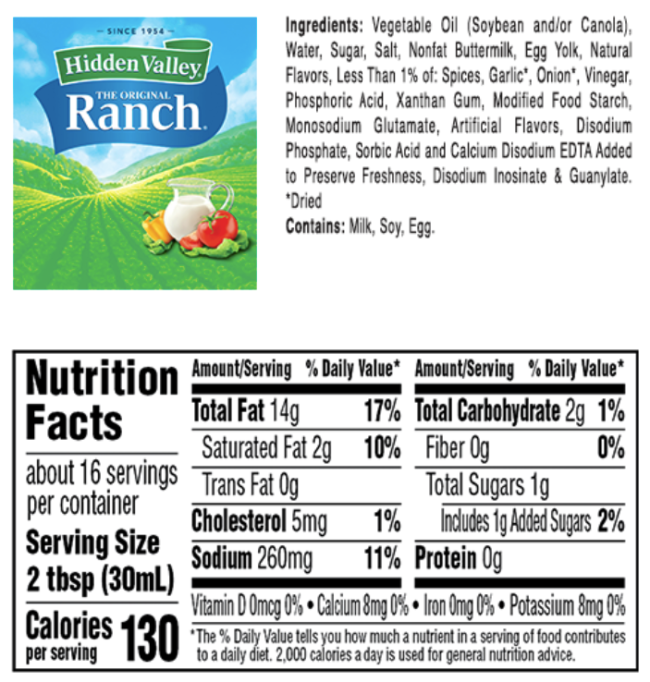
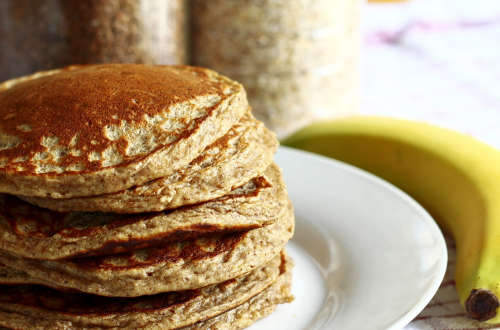
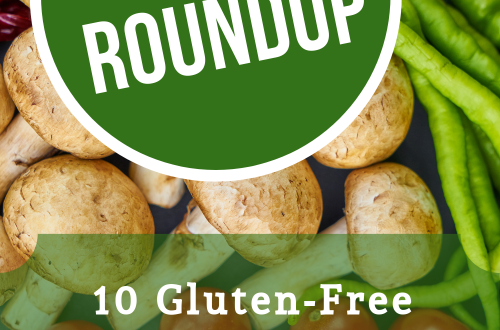
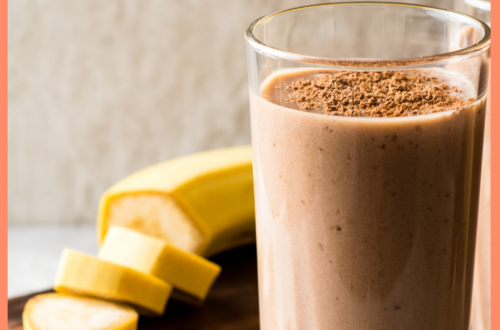
2 Comments
Morgan
Freezing applesauce and yogurt.. 🤯! Can’t wait to wow the kids with this evening snack 🙌
Brook Hagen
Seriously, it’s been a game-changer for me, especially since DH discourages keeping ice cream in the house. Want it fancier? Add some nut butter, chocolate chips, granola, dried fruit … mix-ins are only limited by your imagination and pantry stash. Enjoy!